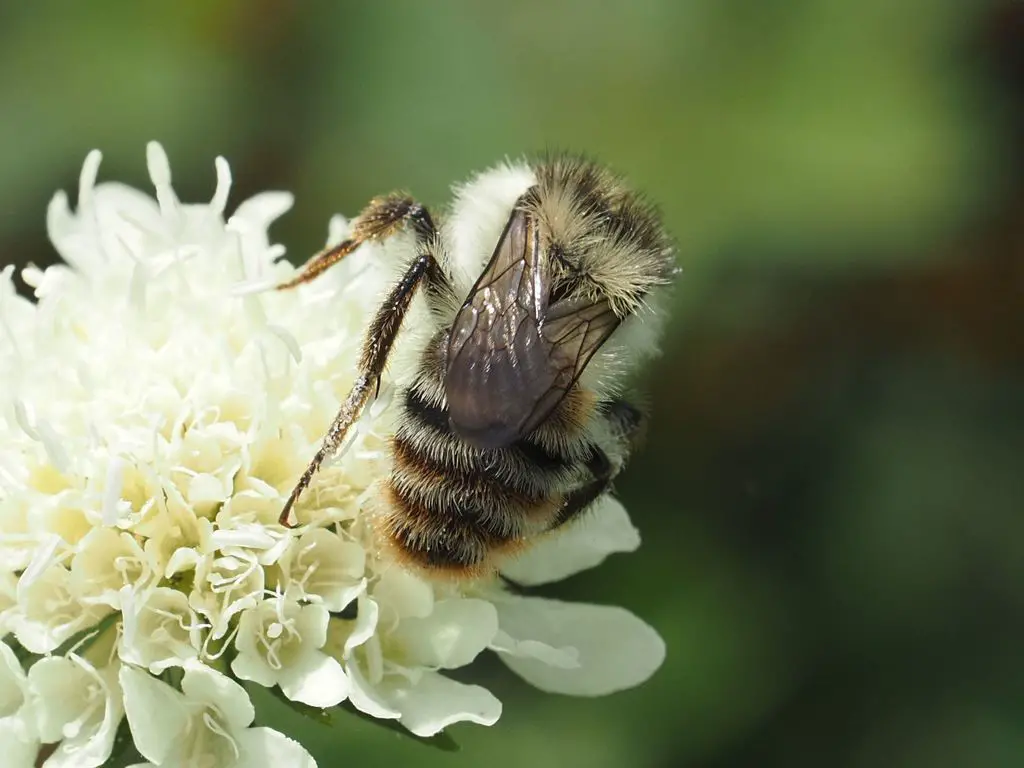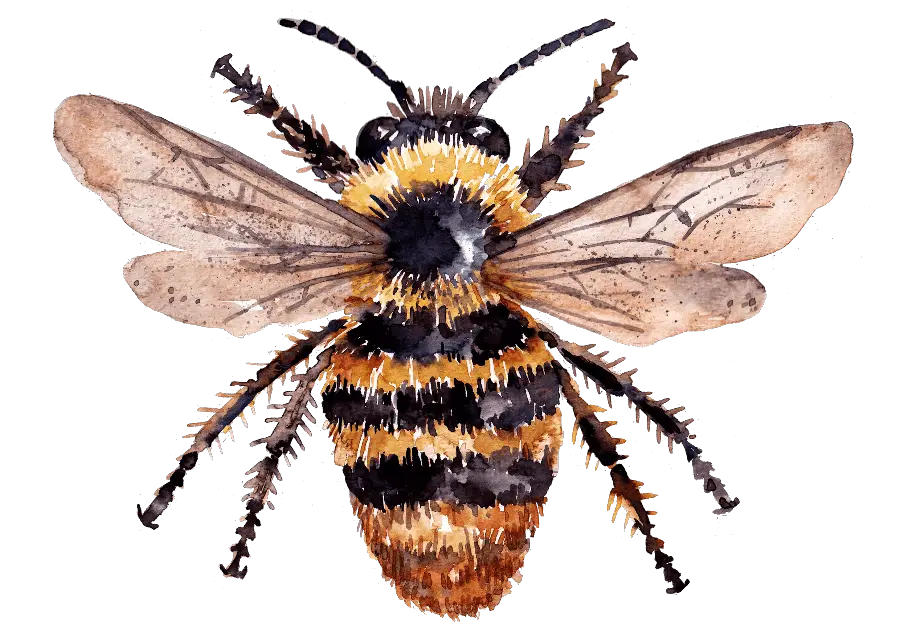Last updated on January 4th, 2024 at 01:58 pm
Bees are nature’s unsung heroes, and among them, the Shrill Carder Bee, Bombus Sylvarum, stands out as a fascinating species. This bee, with its unique appearance and behaviour, is a gem in the world of pollinators. Let’s dive deep into the world of the Shrill Carder Bee and discover what makes it so special.
Appearance: A Bee Like No Other
The Shrill Carder Bee is one of the rarest bees in Britain so it’s a visual treat if you get a chace to spot one. It boasts a distinctive greyish-green, straw-coloured body, setting it apart from many other bumblebees. But what truly makes it stand out is its dull orange tail and a clear black band across its thorax. This combination of colours makes it relatively easy to identify, especially for those familiar with different bee species.
Comparison with Other Bees:
- Great Yellow Bumblebee (Bombus distinguendus): Found in northern Scotland, it has a similar black thoracic stripe.
- Field Cuckoo Bumblebee (Bombus campestris): Shares the black thoracic stripe.
- Ginger Carder Bumblebees: Includes the Common Carder Bee (Bombus pascuorum) and the Moss Carder Bee (Bombus muscorum). These can look similar but lack the orange tail.
- Brown-banded Carder Bee (Bombus humilis): Another look-alike but without the orange tail.
- Red-shanked Carder Bumblebee (Bombus ruderarius): Males have a similar banding pattern, but their yellow bands are much darker, and their red tail is brighter.

Habitat and Behavior
The Shrill Carder Bee is a rare sight, known to be found in only a few locations in south Wales and southern England. Even in these areas, they are generally scarce. This bee has a strong association with complex flowers, especially from the families Lamiacaea and Fabacaea.
When to Spot Them:
- Time of Year: The best time to spot these bees is during the warmer months when flowers are in full bloom.
- Location: South Wales and southern England are your best bets.
Diet: A Flower Lover
The Shrill Carder Bee has a penchant for complex flowers. Their diet primarily consists of nectar and pollen from flowers in the Lamiacaea and Fabacaea families. This dietary preference not only provides them with essential nutrients but also plays a crucial role in pollination, helping these plants reproduce.
Favorite Flowers:
- Lamiacaea Family: Includes popular herbs like mint, sage, and rosemary.
- Fabacaea Family: Encompasses leguminous plants like peas, beans, and lentils.
Conservation Efforts
Given its rarity, there are dedicated efforts to monitor and conserve the Shrill Carder Bee. A dedicated recording form for this bee is available on the BWARS site, encouraging enthusiasts and researchers to submit their sightings. This initiative helps in tracking their population and understanding their habitat preferences.
Conclusion
The Shrill Carder Bee is more than just another bee species. It’s a testament to nature’s diversity and the intricate relationships between pollinators and plants. By understanding and appreciating species like Bombus Sylvarum, we can further our mission at Revive a Bee to promote the plight of all bees globally.
Quick Facts:
| Feature | Description |
|---|---|
| Scientific Name | Bombus Sylvarum |
| Appearance | Greyish-green, straw-colored with an orange tail |
| Habitat | Greyish-green, straw-coloured with an orange tail |
| Diet | Flowers from the Lamiacaea and Fabacaea families |
| Conservation Status | Rare |
If you’re keen on identifying more bees, check out our bee ID guide for a guide on a whole range of species.





